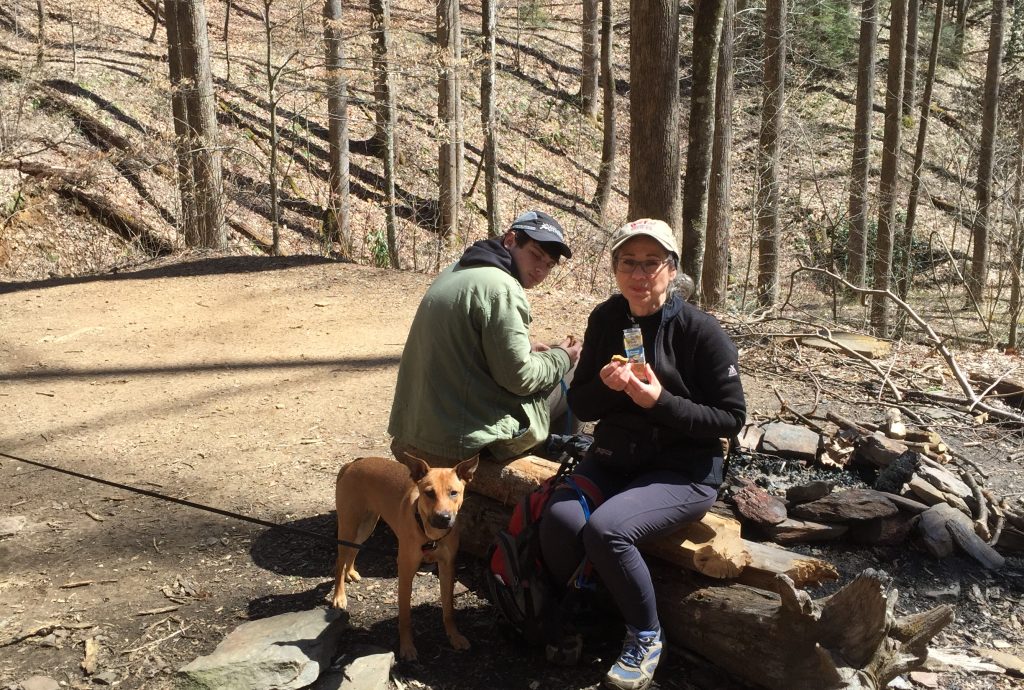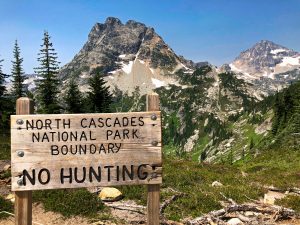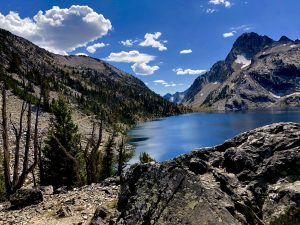
Preparation is important for safe hiking. In Part 2 of our “How to Go Hiking” series, we examine basic considerations for hiking water, hydration, and food.

Chris & Mac
We outventure to help you outventure!
Support Grey Otter Outventures!
Please help us continue to bring you great content:
Now that your pre-planning is complete and you know the characteristics of the trails you intend to hike, let’s look at hiking water, hydration, and food. Even on a simple hike, you should carry ample food and water. Remember, you will be away from these resources on the trail and there is always the possibility of getting lost, so plan your provisions accordingly.
-
Water
Water management is very important. To manage it effectively, use what you learned about trail conditions during your pre-planning. Ensure each hiker in your group carries ample water for their needs and a little extra in case a hiking partner runs short.
Remember that different trail conditions will affect your water consumption rate. On a cool, tree covered trail at low altitude, you may require only less water. Alternatively, on high temperature, fully exposed desert hikes you may require up to a gallon of water per day per hiker. Also understand that even in cold climates, particularly at altitude, your body needs water to prevent dehydration. You may not feel thirsty, but make sure to regularly drink small quantities of water to stay hydrated. Knowing the conditions in which you will hike and your personal consumption rates will help you plan adequate water reserves. You should also know whether water is available on the trail in case you run out and need to filter (always filter – your insides will thank you later!).
-
Hydration
There is a condition called hyponatremia, commonly referred to as “water intoxication”. The condition is caused by drinking too much water, too fast, which throws off the balance of electrolytes in your body and can prove fatal. This condition can be a particular problem when hiking is very hot, arid areas such as the Grand Canyon. As such, it is prudent for you to carry a sport drink designed to replace electrolytes lost through sweat in addition to the water in your backpack’s bladder. An easy way to do this is to carry a powdered hydration additive and a small water bottle. This way, if you need added hydration, you can avoid adding the hydration powder to your bladder.
-
Food
Don’t think of food as just something you will carry to have a snack or lunch on the trail. Food is also for safety and fuel. Hiking can burn a lot of calories, resulting in a loss of energy making the final legs of the hike a grind if you did not fuel properly. Additionally, food helps prevent conditions such as hyponatremia, discussed above, by replacing essential salts and electrolytes in your body. Finally, should you get lost or encounter a problem on the hike, having some food in your pack may be essential to your safety. Always carry at least some basic trail mix with salty nuts and dried fruit. Beyond that, carry whatever food varieties and amounts you believe necessary, given trail characteristics and your goals, to make the hike fun and safe.
Gear We Use for Day Hiking
To see descriptions of the gear Chris & Mac use for day hiking, as well as links to manufacturers and retailers offering the gear for sale, please CLICK HERE.
SAFETY DISCLAIMER: The activities discussed in this website are outdoor activities and, as such, have inherent risks to which participants are exposed. It is not the intent of this website, nor is it possible due to the variability of weather, terrain, equipment, and experience, to detail all of those risks. The information contained in this site is informational, but not instructive nor exhaustive. It is the sole responsibility of the user to ensure he/she is in good health, fully prepared, and fully informed as to dangers before undertaking any of the activities discussed in this website and the user does so at his/her own risk. The user understands that by using this website he/she acknowledges and accepts all risks associated with use of information from this website and participation in any particular activity addressed herein. Please see “Terms of Use” for additional information.
Want to share this article with your friends? Click on the share button below:
Want more?
Get the latest outventure updates by following us on social media . . .


